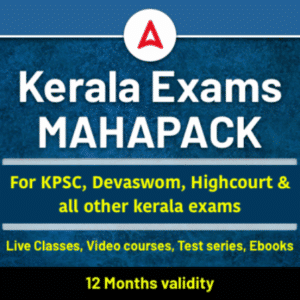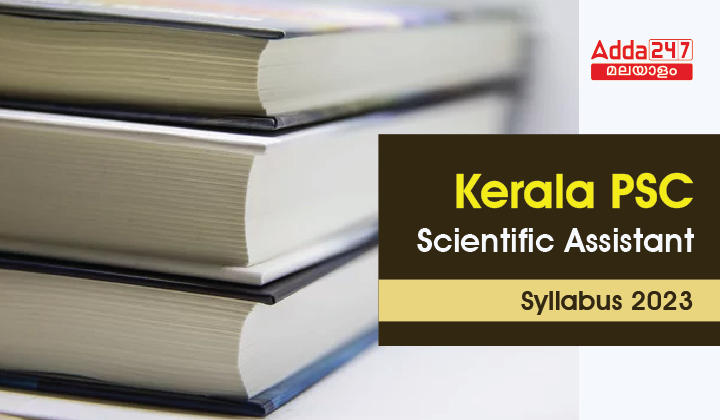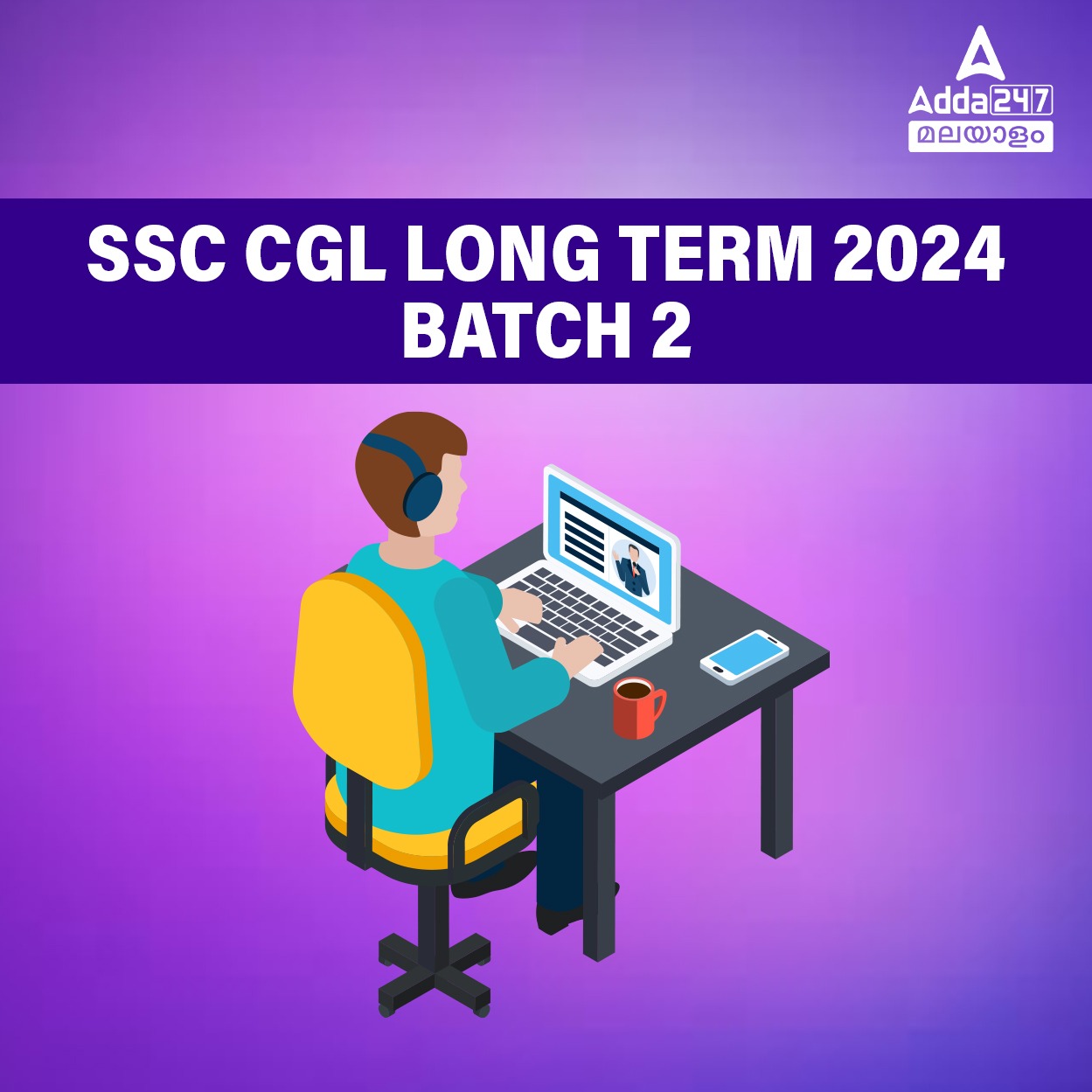Table of Contents
Kerala PSC Scientific Assistant Syllabus 2023: Kerala Public Service Commission has released the Kerala PSC Scientific Assistant Exam Syllabus 2023. If you are preparing for the upcoming Examination and would like to know the detailed syllabus, then your search ends right here. In this article we will provide the detailed syllabus of the upcoming Kerala PSC Scientific Assistant Exam. In order to crack the exam, one needs to have a clear understanding of the syllabus, therefore read through Scientific Assistant Exam Syllabus to broaden your perspective. You can also download Kerala PSC Scientific Assistant Exam Syllabus 2023 in pdf format.
| Kerala PSC Scientific Assistant Syllabus 2023 | |
| Organization | Kerala Public Service Commission |
| Category | Exam Syllabus |
| Post Name | Scientific Assistant |
| Department | Ayurveda Medical Education |
| Official Website | https://www.keralapsc.gov.in/ |
Kerala PSC Scientific Assistant Exam Syllabus 2023
Kerala PSC Scientific Assistant Exam Syllabus 2023: കേരള പബ്ലിക് സർവീസ് കമ്മീഷൻ Scientific Assistant Exam syllabus പുറത്തിറക്കി. പരീക്ഷയ്ക്കുള്ള തയ്യാറെടുപ്പുകൾ ആരംഭിക്കാൻ സമയമായി. പരീക്ഷയിൽ വിജയിക്കുന്നതിന്, സിലബസിനെക്കുറിച്ച് വ്യക്തമായ ധാരണ ഉണ്ടായിരിക്കണം, അതിനാൽ കേരള PSC സയന്റിഫിക് അസിസ്റ്റന്റ് സിലബസ് 2023 വിശദമായി വായിച്ച് മനസിലാക്കുക. നിങ്ങൾക്ക് Scientific Assistant Syllabus 2023 pdf രൂപത്തിൽ ഡൗൺലോഡ് ചെയ്യാം.
Fill the Form and Get all The Latest Job Alerts – Click here
Kerala PSC Scientific Assistant Exam Date 2023
Kerala PSC Scientific Assistant Exam Syllabus 2023: Overview
ചുവടെ നൽകിയിരിക്കുന്ന പട്ടികയിൽ Kerala PSC Scientific Assistant Syllabus 2023 സംബന്ധമായ എല്ലാ പ്രധാനപ്പെട്ട വിവരങ്ങളും ലഭിക്കും.
| Kerala PSC Scientific Assistant Exam Syllabus 2023 | |
| Organization | Kerala Public Service Commission |
| Category | Exam Syllabus |
| Name of the Post | Scientific Assistant |
| Department | Ayurveda Medical Education |
| Kerala PSC Scientific Assistant Confirmation Date | 23rd March 2023 to 11th April 2023 |
| Category No. | 072/2022 |
| Type Of Exam | OMR |
| Total Marks | 100 |
| Total Number of Questions | 100 |
| Medium of Question | English |
| Exam Duration | 1 hour 30 min |
| Official Website | https://www.keralapsc.gov.in/ |
Scientific Assistant Exam Pattern 2023
കേരള പിഎസ്സി സയന്റിഫിക് അസിസ്റ്റന്റ് പരീക്ഷയുടെ വിശാലമായ മാതൃക ഇതാണ്:
- ഒബ്ജക്ടീവ് അടിസ്ഥാനത്തിലുള്ള പരീക്ഷയാണിത്.
- ആകെ 1.30 മണിക്കൂറാണ് പരീക്ഷാ ദൈർഘ്യം.
- ആകെ മാർക്ക് 100.
- ഓരോ ശരിയായ ഉത്തരത്തിനും 1 മാർക്ക് നൽകും.
- ഓരോ തെറ്റായ ഉത്തരത്തിനും 1/3 മാർക്ക് കുറയ്ക്കുന്നു.
| Scientific Assistant Exam Pattern 2023 |
|||
| Module | Topics | Questions | Marks |
| I | Analytical Principles | 10 | 10 |
| II | Separation Techniques | 10 | 10 |
| III | Analysis of selected materials | 10 | 10 |
| IV | Instrumental Methods of Chemical Analysis | 10 | 10 |
| V | Material characterization | 10 | 10 |
| VI | Thermal and Radiochemical methods of Ana1ysis | 10 | 10 |
| VII | Forensic Analysis | 10 | 10 |
| VIII | Spectroscopic identification of organic compounds | 10 | 10 |
| XI | Coordination chemistry | 10 | 10 |
| X | Surface Chemistry, Catalysis and Reaction Kinetics | 10 | 10 |
| Total | 100 Questions | 100 Marks | |
Kerala PSC Exam Calendar June 2023
Kerala PSC Divisional Accounts Officer Mains Syllabus 2023
Kerala PSC J Scientific Assistant Detailed Exam Syllabus 2023
MODULE – I: Analytical Principles (10 Marks)
- Evaluation of analytical data: Accuracy and precision. Standard deviation, variance and coefficient of variation. Student ‘t’ test, ‘Q’ test, and ‘F’ test. Confidence limits. Volumetric methods: Classification of reactions in volumetry. Theory of indicators. Complexometric titrations: Titration using EDTA-direct and back titration methods. Precipitation titrations. Redox titrations. Correlation analysis: Scatter diagram. Correlation coefficient, r. Calculation of r by the method of least squares. Applications of TG, DTA and DSC in the study of metal complexes.
MODULE – II: Separation Techniques (10 Marks)
- Classification of chromatographic methods. Theory of chromatography. Applications of chromatographic methods. Adsorption and partition chromatography. Paper, thin layer and column chromatographic methods. Centrifugal TLC, LC, pressure column chromatography, HPLC and GC, column matrices. Detectors. Affinity and chiral separations using HPLC. GC MS and LC MS- Principle, instrumentation and applications. Normal and ultra-centrifugation. Gel and capillary electrophoresis and their applications.
MODULE – III: Analysis of selected materials (10 Marks)
- Principles of estimation of biological fluids: Estimation and interpretation of data for blood sugar, haemoglobin, urea and cholesterol. Biological significance, analysis and assay of enzymes: pepsin, monoaminoxidase, and tyrosinase. Analysis of drugs and pharmaceuticals: quality control, official methods, classical and modern methods of drug analysis. Analysis of common drugs: analgesics, antipyretics, antimalarial, antiallergic (anti-histamines) and
antibiotics.
MODULE – IV: Instrumental Methods of Chemical Analysis (10 Marks)
- Flame spectrometry: introduction, elementary theory, instrumentation, type of burners, type of interferences, background correction method and applications. Atomic absorption spectroscopy (AAS) : principle and instrumentation of AAS. Atomic emission spectrometry: introduction,
equipment, qualitative and quantitative analysis with AES, plasma emission spectrometry, ICPAES, sample introduction and measurements. X-ray Photoelectron spectroscopy (XPS): introduction instrumentation, XPS imaging. Molecular fluorescence and X-ray fluorescence: instrumentation and applications.
Workshop Instructor (Automobile) Syllabus 2023
MODULE – V: Material characterization (10 Marks)
- Electron microscopies: Scanning electron microscopy (SEM), Transmission Electron Microscopy (TEM), High Resolution Transmission Electron Microscopy (HR-TEM). Probe microscopies: Atomic Force Microscopy (AFM), Scanning tunnelling microscopy (STM), Scanning tunnelling electron microscopy (STEM). X-ray methods: X-ray diffraction (XRD), Energy Dispersive X-ray Spectroscopy(EDAX), X-ray Fluorescence (XRF). Spectroscopic
techniques: IR spectroscopy for surface functionalization of nanoparticles, UV-visible – Diffused reflectance spectroscopy, photoluminescence, Raman spectroscopy. (Basic understanding of each technique with special emphasis on characterization at nano scale). ESR spectroscopy: Electron spin. Interaction with magnetic field. Kramer’s rule. The g factor. Fine structure and hyperfine structure. Analytical applications of ESR, Determination of reaction rates and mechanisms by ESR, Structural determination by ESR. Elementary idea of ENDOR and ELDOR.
MODULE – VI: Thermal and Radiochemical methods of Ana1ysis (10 Marks)
- Principle, theory and instrumentation of thermo mechanical analysis (TMA) and Dynamic mechanical analysis (DMA). Thermometric titrimetry – theory, applications. Radiochemical methods of analysis: radioactive tracer techniques and its applications, principle and applications of isotope dilution analysis, neutron activation analysis and its applications. Applications of radio isotopes in industry, medicine, autoradiography, radio pharmacology, radiation safety precaution, nuclear waste disposal.
MODULE – VII: Forensic Analysis (10 Marks)
- Analysis of biological substances – blood, saliva and urine. General discussion of poisons with special reference to mode of action of cyanide and organophosphates. Classification of poisons, Lethal dose, significance of LD50 and LC50. Diagnosis of poisons in the living and the dead– clinical symptoms – post mortem appearances. Antidotes for common poisons. Estimation of poisonous materials such as lead, mercury, chromium and arsenic in biological materials. DNA Finger printing, Steps involved, DNA Finger printing for tissue identification in dismembered bodies, Detecting steroid consumption in athletes.
MODULE – VIII: Spectroscopic identification of organic compounds (10 Marks)
- UV & IR spectroscopy. 1H NMR (proton NMR), 13C NMR, Mass spectrometry, A brief account of the 2D NMR techniques like DEPT, COSY, HMQC, HETCOR, HMBC, TOCSY
Kerala PSC Degree Prelims Result 2023
MODULE – IX: Coordination chemistry (10 Marks)
- Thermodynamic and kinetic stability, Stability of complex ions in aqueous solutions: Stability of chelates Crystal field theory: Splitting of d orbitals in octahedral, tetragonal, square planar, tetrahedral, trigonal bipyramidal and square pyramidal fields. Jahn-Teller theorem, evidence for JT effect, static and dynamic JT effect. Spectrochemical series. Evidence of covalency in MetalLigand bond, introduction to Ligand field theory. Experimental evidence of pi bond on the stability of sigma bond. Nephelauxetic effect. Interpretation of electronic spectra of complexesOrgel diagrams, Tanabe-Sugano diagrams, calculation of Dq, B and β (Nephelauxetic ratio) values, charge transfer spectra.
MODULE – X: Surface Chemistry, Catalysis and Reaction Kinetics (10 Marks)
- Different types of surfaces, properties of surface phase. Thermodynamics of surface. Surface tension of solutions. Surfactants and micelles. Examination of surfaces- Low Energy Electron Diffraction (LEED). Catalysis: Mechanism and theories of homogeneous and heterogeneous catalysis. Bimolecular surface reactions. Langmuir–Hinshelwood mechanism. Enzyme catalysis. Adsorption isotherms – Freundlich and Langmuir isotherms. Thermodynamic and statistical derivation of Langmuir adsorption isotherm. Multilayer adsorption-the BET theory and Harkins-Jura theory. Adsorption from solutions: Gibb’s adsorption equation and its verification. Adsorption with dissociation. Adsorption with interaction between adsorbate molecules. Theories of reaction rates: Collision theory and Transition state theory – Eyring equation. Thermodynamic formulation of the reaction rates. Potential energy surfaces. Reactions in solution: Factors affecting reaction rates in solutions, effect of dielectric constant and ionic strength, cage effect, Bronsted-Bjerrum equation. Kinetic effects: Primary and secondary kinetic salt effect, influence of solvent on reaction rates, significance of volume of activation, linear free energy relationship. Hammet equation and Taft equation.
Scientific Assistant Kerala PSC Syllabus 2023
സയന്റിഫിക് അസിസ്റ്റന്റ് പരീക്ഷാ തീയതിക്കൊപ്പം, സയന്റിഫിക് അസിസ്റ്റന്റ് പരീക്ഷക്കായുള്ള ലേറ്റസ്റ്റ് സിലബസും കേരള PSC യുടെ ഔദ്യോഗിക സൈറ്റിൽ (keralapsc.gov.in) പ്രസിദ്ധീകരിച്ചു. സയന്റിഫിക് അസിസ്റ്റന്റ് സിലബസ് pdf ചുവടെ നൽകിയിട്ടുള്ള ഡയറക്റ്റ് ലിങ്കിൽ ക്ലിക്ക് ചെയ്ത് ഡൗൺലോഡ് ചെയ്യാവുന്നതാണ്.
Scientific Assistant Syllabus 2023 pdf
Also Read,
Weekly/ Monthly Current Affairs PDF (Magazines)
ഇതര പരീക്ഷകളുടെ ഏറ്റവും പുതിയ വിജ്ഞാപനങ്ങൾ, ദൈനംദിന ക്വിസുകൾ എന്നിവയ്ക്കായി ADDA247 മലയാളം ആപ്പ് ഡൗൺലോഡ് ചെയ്യുക.
Download the app now, Click here
ഇത് നിങ്ങൾക്കുള്ള സമയമാണ്. പരീക്ഷയ്ക്ക് സ്വയം തയ്യാറാകാനുള്ള ഏറ്റവും അനുയോജ്യമായ സമയമാണിത്. നിങ്ങൾ വീട്ടിൽ നിന്ന് ഞങ്ങളോടൊപ്പം പരീക്ഷയ്ക്ക് തയ്യാറാകുക. മികച്ച കോഴ്സുകൾ, മികച്ച ഹെഡ് ട്രെയിനർമാർ, ലളിതമായ നിർദ്ദേശങ്ങൾ, ഗുണനിലവാരമുള്ള ക്വിസ് ചോദ്യങ്ങൾ ഞങ്ങൾ നിങ്ങൾക്ക് നൽകുന്നു. ഈ അത്ഭുതകരമായ സമയം പഠിക്കാൻ നിങ്ങൾക്ക് ബുദ്ധിമുട്ടുള്ള കോഴ്സിന്റെ ഭാഗങ്ങൾ ശക്തിപ്പെടുത്തുക. Mock Tests, Test series , E-Books , Daily Current Affairs, Weekly Current Affairs, Monthly Current Affairs എന്നിവയുടെ സൗജന്യ PDF കൾ അങ്ങനെ നിരവധി പഠന സാമഗ്രികൾ ഇംഗ്ലീഷിലും മലയാളത്തിലും (English & Malayalam) ADDA 247 നിങ്ങൾക്ക് നൽകുന്നു. സൗജന്യവും, പണമടച്ചുള്ളതുമായ ക്ലാസുകൾ ഞങ്ങൾ നിങ്ങൾക്ക് ലാഭകരമായ രീതിയിൽ വാഗ്ദാനം ചെയ്യുന്നു.
***വരാനിരിക്കുന്ന പരീക്ഷകളിൽ വിജയിക്കാൻ ഞങ്ങളോടൊപ്പം ചേരുക***
Use Coupon code- KPSC (എക്കാലത്തെയും വിലക്കുറവ്)
*മലയാളത്തിലെ തത്സമയ ക്ലാസുകൾ ഇപ്പോൾ നിങ്ങളുടെ വീട്ടിൽ ലഭ്യമാണ്*

Kerala Exams Mahapack
*ലക്ഷ്യത്തിലേക്കുള്ള ആദ്യ ചുവടുവെപ്പ് | ADDA247 മലയാളത്തിൽ പരിശീലനം ആരംഭിക്കൂ*
Telegram group:- KPSC Sure Shot Selection
KPSC Exam Online Test Series, Kerala Police and Other State Government Exams












